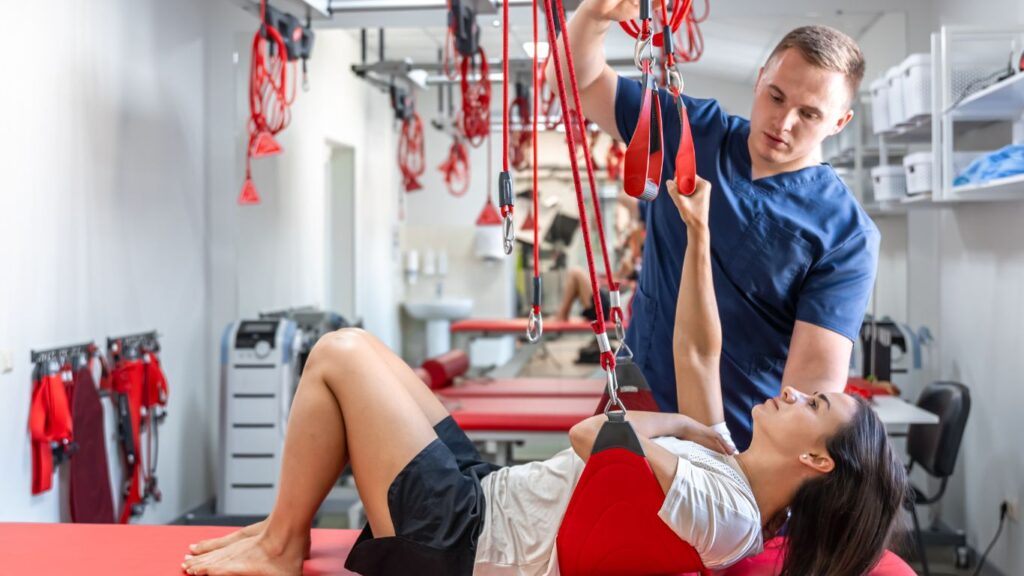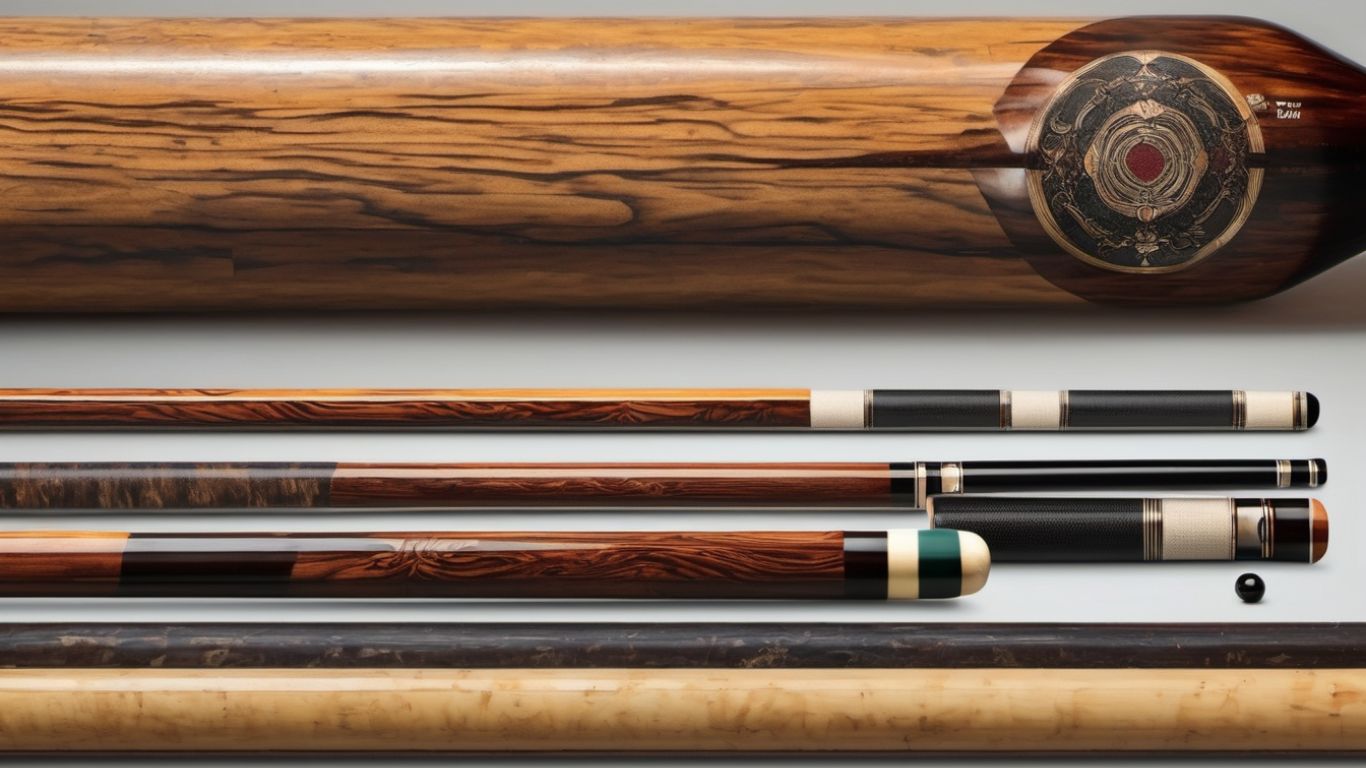Sports medicine is a field that plays a crucial role in enhancing athletes’ performance, preventing injuries, and helping them recover swiftly after physical setbacks. While it may seem reserved for professional athletes or sports enthusiasts, its impact extends beyond the sports arena. From youth athletes to weekend warriors, sports medicine offers valuable insights into optimizing overall health and well-being through physical activity. In this article, we will delve into the captivating world of sports medicine, unraveling the mysteries beneath its surface and shedding light on its essential role in keeping athletes and active individuals at the top of their game.

Credit amazon.com
Sports medicine combines various disciplines, including physiology, physical therapy, orthopedics, and nutrition, to provide comprehensive care to athletes of all levels. It encompasses many practices, from injury prevention strategies and performance optimization techniques to rehabilitation plans tailored to specific sports-related issues. As we explore this multidisciplinary field, we will uncover the science behind injury prevention and recovery and how sports medicine professionals work closely with athletes to develop personalized plans to maximize their potential. Moreover, we will examine the latest advancements in technology and research that have revolutionized the field, allowing sports medicine to evolve and adapt to the ever-changing demands of today’s athletes and active individuals.
Definition of sports medicine
Sports medicine is a rapidly growing field that has gained significant recognition recently. As athletes strive to push their limits and achieve optimal performance, the need for specialized medical care has become paramount. Sports medicine is a discipline that focuses on the prevention, diagnosis, treatment, and rehabilitation of injuries related to physical activity, exercise, and sports.
At its core, sports medicine aims to promote athletes’ overall health and well-being. It encompasses a wide range of medical professionals, including physicians, surgeons, physical therapists, athletic trainers, and nutritionists, who work together to provide comprehensive care for athletes of all levels, from amateur to professional.
One of the critical aspects of sports medicine is injury prevention. It involves the identification of risk factors and the implementation of strategies to minimize the occurrence of injuries. This can include pre-participation screenings, biomechanical evaluations, and the development of personalized training programs. By focusing on prevention, sports medicine professionals aim to keep athletes healthy and reduce the likelihood of future injuries.

Credit amazon.com
When injuries occur, sports medicine plays a vital role in accurately diagnosing and treating these conditions. Sports medicine physicians are trained to evaluate and analyze various injuries, ranging from sprains and strains to fractures and concussions. With their specialized knowledge and expertise, they can develop individualized treatment plans that address the specific needs of each athlete.
Rehabilitation is an integral part of sports medicine and focuses on helping athletes recover from injuries and return to their previous level of performance. Through physical therapy, exercises, and other therapeutic interventions, sports medicine professionals aim to restore an athlete’s strength, flexibility, and mobility. The goal is not only to facilitate a full recovery but also to prevent the recurrence of injuries.
Sports medicine also encompasses the field of sports nutrition. Proper nutrition is crucial to an athlete’s overall performance and recovery. Sports nutritionists specialize in developing personalized meal plans that optimize an athlete’s energy levels, enhance muscle recovery, and support their immune system. They guide the types of foods to consume before, during, and after physical activity and advise on proper hydration strategies.
In addition to their role in injury prevention, diagnosis, treatment, and rehabilitation, sports medicine professionals also enhance sports performance. They work closely with athletes to optimize their training methods, develop strength and conditioning programs, and improve their overall athletic performance. By employing evidence-based practices and advanced techniques, sports medicine professionals help athletes unlock their full potential and achieve their goals.
In summary, sports medicine is a multidisciplinary field that focuses on the health and well-being of athletes. It encompasses a wide range of medical professionals dedicated to preventing, diagnosing, treating, and rehabilitating physical activity, exercise, and sports injuries. Through their expertise in injury prevention, accurate diagnosis, effective treatment, rehabilitation, and performance enhancement, sports medicine professionals play a vital role in helping athletes achieve optimal performance and maintain a healthy lifestyle.
History and development of sports medicine
Sports medicine has evolved over the years, evolving from a discipline rooted in empirical knowledge to a specialized field incorporating scientific research and the latest technological advancements. This article aims to delve into the fascinating history and development of sports medicine, shedding light on its journey to become what it is today.
The roots of sports medicine can be traced back to ancient Greece, where physical fitness and athletic competitions were highly regarded. Hippocrates, often called the father of medicine, made significant contributions to the field by treating injuries sustained in sports activities. He believed in the concept of “vis medicatrix naturae,” or the healing power of nature, and emphasized the importance of rest and proper nutrition in aiding recovery.
However, in the 20th century, sports medicine took shape as a distinct medical discipline. Early pioneers recognized the need for specialized care for athletes and began developing strategies to prevent and treat sports-related injuries. One such pioneer was Dr. John Irwin, who established the first sports medicine clinic in the United States in 1919.

Credit amazon.com
The mid-20th century witnessed a surge in interest and research in sports medicine, driven by advancements in medical technology and an increased understanding of the human body’s response to physical activity. In the 1950s, the field of sports medicine started to gain recognition as a legitimate medical specialty, with the formation of professional organizations dedicated to its study and research.
One of the critical events in the history of sports medicine was the establishment of the American College of Sports Medicine (ACSM) in 1954. The ACSM played a pivotal role in advancing the field by promoting scientific research and disseminating knowledge through its publications and conferences. The organization also developed guidelines for exercise prescription, which proved helpful for both athletes and the general population seeking to maintain their health and well-being.
In the 1970s and 1980s, sports medicine continued growing as an interdisciplinary field, incorporating expertise from disciplines such as orthopedics, physiotherapy, biomechanics, nutrition, and sports psychology. This multidisciplinary approach gave a holistic understanding of the athlete’s needs and led to more comprehensive care.
The rapid advancements in technology further transformed the practice of sports medicine. Introducing imaging techniques like magnetic resonance imaging (MRI) and ultrasound revolutionized diagnosing and assessing sports injuries. High-speed cameras and motion analysis systems enabled researchers to study and improve athletic performance through biomechanics analysis.
Sports medicine encompasses various disciplines and specialties, including orthopedic surgery, physical therapy, sports nutrition, exercise physiology, and sports psychology. It is now recognized as an essential component of the healthcare system, catering to elite athletes and individuals of all ages and abilities who engage in physical activity.
In conclusion, the history and development of sports medicine bear witness to the evolution of a highly specialized field that combines empirical knowledge, scientific research, and technological advancements. From its humble origins in ancient Greece to the establishment of dedicated organizations such as the ACSM, sports medicine continues to progress and contribute to the well-being and performance of athletes and individuals. As our understanding of the human body and technology continue to advance, so will the field of sports medicine, unraveling more mysteries and paving the way for optimal athletic care.
Role of a sports medicine specialist
In the fast-paced and competitive world of sports, injuries are an unfortunate reality that athletes and sports enthusiasts often face. When these injuries occur, a highly skilled and knowledgeable professional must provide the specialized care needed to get athletes back in the game. This is where a sports medicine specialist comes in.
Sports medicine specialists are healthcare professionals who have undergone extensive training and deeply understand the medical and athletic realms. They focus on preventing, diagnosing, treating, and rehabilitating sports-related injuries. These highly specialized specialists work closely with athletes, coaches, trainers, and other healthcare professionals to ensure optimal care and performance.
One of the primary roles of a sports medicine specialist is to prevent injuries from occurring. They do this by conducting thorough physical assessments and screenings to identify potential risk factors. By closely monitoring an athlete’s health and performance, they can develop personalized injury prevention programs and provide specific training techniques, equipment, and nutrition recommendations.

Credit amazon.com
Sports medicine specialists are critical in accurately diagnosing the problem when injuries occur. They have extensive musculoskeletal anatomy and physiology knowledge, allowing them to analyze an athlete’s symptoms, conduct physical examinations, and order relevant diagnostic tests such as X-rays, MRIs, or ultrasounds. Through their expertise, they can efficiently identify the root cause of the injury and determine the most appropriate treatment plan.
Once a diagnosis is made, sports medicine specialists are responsible for designing and implementing effective treatment strategies. These strategies may include a combination of medication, physical therapy, rehabilitation exercises, and specialized techniques such as joint injections or minimally invasive procedures. They work closely with physical therapists and other rehabilitation specialists to ensure the treatment plan is tailored to the athlete’s needs and goals.
Furthermore, sports medicine specialists play a crucial role in the rehabilitation process. They closely monitor athletes’ progress, adjusting their treatment plan to promote healing, restore function, and prevent further injury. Through regular follow-up appointments and ongoing communication, sports medicine specialists ensure that athletes receive continuous care and support throughout their recovery.
Sports medicine specialists also serve as a valuable resource for education and guidance. They have a wealth of knowledge on sports nutrition, ergonomics, injury prevention strategies, and performance optimization. Providing athletes, coaches, and trainers with evidence-based information and practical advice empowers individuals to make informed decisions that positively impact their health and performance.
In addition to their direct involvement with athletes, sports medicine specialists contribute to research and advancements in the field. By staying up-to-date with the latest scientific discoveries, participating in clinical trials, and publishing studies, they continuously strive to improve the understanding and treatment of sports-related injuries.
In conclusion, sports medicine specialists play a vital role in sports by providing comprehensive care for athletes and sports enthusiasts. From injury prevention to diagnosis, treatment, rehabilitation, and education, these highly skilled professionals are dedicated to ensuring the overall well-being and optimal performance of individuals involved in sports. Their expertise and commitment are indispensable in unraveling the mysteries of sports medicine and helping athletes overcome challenges to reach their full potential.
Common injuries treated in sports medicine
In the fast-paced and exhilarating world of sports, injuries are an unfortunate reality that athletes often face. From mild sprains to severe fractures, these injuries can significantly impact an athlete’s performance and overall well-being. That’s where the field of sports medicine comes into play, providing specialized care and treatment for individuals involved in sports at all levels. This section will explore some of the most common injuries treated in sports medicine, shedding light on their causes, symptoms, and available treatments.
One of the most prevalent injuries in sports is the sprained ankle. Whether you’re a professional basketball player or a weekend warrior, ankle sprains can occur in any sport. This injury often happens when the foot rolls inward, stretching or tearing the ligaments that stabilize the ankle joint. Symptoms of a sprained ankle may include pain, swelling, and difficulty in walking or bearing weight. Sports medicine professionals employ various treatment modalities, including rest, ice, compression, elevation (RICE), and physical therapy to aid in recovery and prevent further damage.

Credit amazon.com
Another common injury in sports medicine is the knee injury, with the anterior cruciate ligament (ACL) tear being a primary concern. ACL tears often result from sudden direction changes or direct blows to the knee. They are ubiquitous in sports that involve jumping, pivoting, or quick direction changes, such as soccer, basketball, and skiing. Athletes who experience an ACL tear may hear a popping sound at the time of injury and may experience immediate swelling and instability in the affected knee. Treatment options for ACL tears typically involve physical therapy and rehabilitation exercises; however, some severe cases may require surgical intervention.
In contact sports like football or rugby, concussions are a frequent concern. These injuries result from a sudden blow to the head, causing the brain to rush, resulting in temporary dysfunction. Concussions can affect an athlete’s cognitive function and overall well-being. Symptoms may include headaches, confusion, dizziness, and sensitivity to light or noise. In sports medicine, the treatment approach for concussions involves strict rest, both physically and mentally, to allow the brain to heal. Gradual return-to-play protocols ensure athletes fully recover before resuming sports activities.
Stress fractures are another injury that athletes often encounter, especially runners and those involved in endurance sports. These tiny cracks in the bone’s surface are caused by repetitive stress or overuse and can lead to intense pain and discomfort. Symptoms of stress fractures may include localized pain, swelling, and tenderness in the affected area. Treatment for stress fractures often involves rest and protective devices like air casts or crutches to minimize weight-bearing on the injured bone. Physical therapy may also be recommended to strengthen the muscles surrounding the fracture and promote proper healing.
This overview only scratches the surface of the diverse range of injuries treated in sports medicine. Other common injuries include tennis elbow, rotator cuff tears, muscle strains, and dislocations. What remains consistent in sports medicine is the dedication of healthcare professionals to provide comprehensive care to athletes, helping them recover from injuries, prevent further damage, and return to their sport with optimal performance.
Advances and future trends in sports medicine
Sports medicine is a rapidly evolving field that caters to athletes and individuals seeking to maintain an active and healthy lifestyle. As our understanding of the human body and its response to physical activity continues to deepen, so do the advancements in sports medicine. In this section, we will explore some of the exciting progress and future trends shaping the sports medicine world.
One significant advancement in sports medicine has been the development of minimally invasive surgical techniques. Traditional open surgery often resulted in extended recovery times and increased risk of complications. However, advances in arthroscopic surgery have revolutionized the field. This technique utilizes small incisions and a tiny camera called an arthroscope to visualize and treat damaged tissues. Arthroscopy has proven highly effective in repairing joint injuries, such as ligament tears in the knee and shoulder, enabling athletes to return to play much sooner than with traditional open surgery.

Credit amazon.com
Another area of advancement lies in the realm of regenerative medicine. Stem cell therapy and platelet-rich plasma (PRP) injections have recently gained considerable attention. These innovative treatments harness the body’s natural healing ability to repair damaged tissues. Stem cells have the potential to regenerate various types of tissues, while PRP injections use a concentrated form of the patient’s blood plasma to accelerate the healing process. These regenerative therapies offer promising results for conditions such as tendon and ligament injuries, osteoarthritis, and muscle strains, providing a non-surgical alternative and reducing recovery times.
Technology is also playing a significant role in the future of sports medicine. Wearable devices like fitness trackers and smartwatches have become increasingly popular among athletes and fitness enthusiasts. These devices monitor various parameters, including heart rate, sleep patterns, and activity levels, allowing individuals to track their progress, set goals, and optimize their training routines. Furthermore, advancements in sensor technology and data analytics enable the development of smart garments and equipment capable of real-time monitoring and analysis, providing valuable feedback to athletes and their medical teams.
Telemedicine, using technology to deliver healthcare remotely, has gained significant traction recently and is poised to revolutionize sports medicine. This approach allows athletes to consult with healthcare professionals in real-time, regardless of location. Athletes can receive expert guidance and advice regarding injury prevention, rehabilitation exercises, and performance optimization through video consultations. Telemedicine also eliminates the need for athletes to travel long distances for consultations, saving time and reducing healthcare costs.
The integration of genomics and personalized medicine in sports medicine shows great promise. Genetic testing can provide valuable insights into an individual’s predisposition to specific injuries or their response to training and nutrition. With this information, sports medicine professionals can design personalized training programs and recommendations tailored to an individual’s unique genetic profile, maximizing their performance potential while reducing the risk of injury.
Conclusion
Sports medicine continues to advance rapidly, driven by ongoing scientific and technological breakthroughs. Minimally invasive surgery, regenerative medicine, wearable devices, telemedicine, and personalized medicine are just a few of the exciting areas of development within the field. As research and innovation continue to push the boundaries, the future of sports medicine holds tremendous potential for improving athletic performance, preventing injuries, and optimizing the overall well-being of athletes and active individuals.
Sports medicine is a mystery filled with jargon and complex procedures. However, gaining insight into this fascinating field allows us to understand better its vital role in keeping athletes in peak condition and maximizing their performance. Whether preventing injuries, treating them, or aiding in rehabilitation, sports medicine professionals have the knowledge and expertise to help athletes reach their full potential. By unraveling this mystery, we can appreciate the dedication and hard work that goes into ensuring the health and well-being of sports stars at every level. So next time you watch a game or participate in a sport, remember the unsung heroes behind the scenes who keep our athletes going strong.









